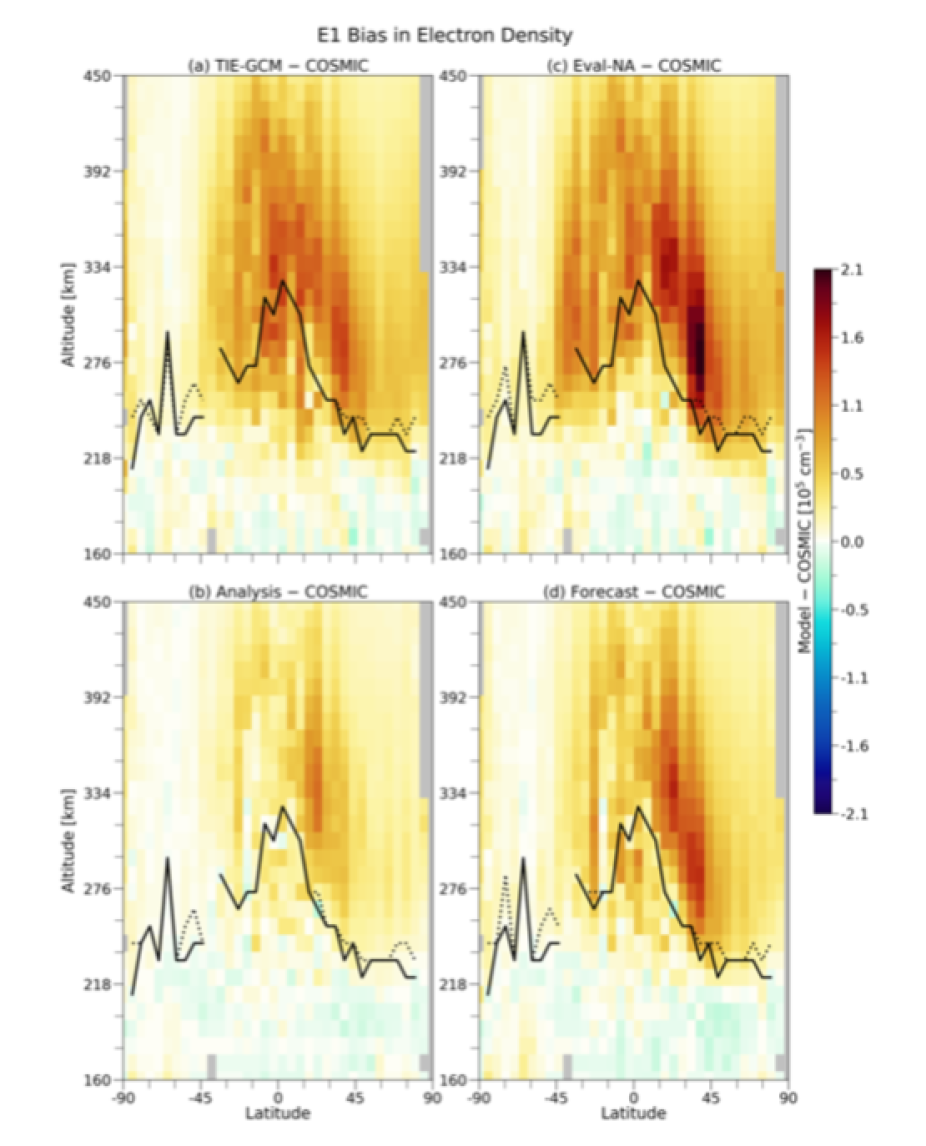Publication Name: Space Weather; First HAO Author's Name: Nick Pedatella; Authors names as they are listed in article: T. Kodikara, K. Zhang, N. M. Pedatella, and C. Borries
This study presents a comprehensive comparison of the impact of solar activity on forecasting the upper atmosphere through assimilation of radio occultation (RO)-derived electron density (Ne) into a physics-based model (TIE-GCM) using an ensemble Kalman filter. Globally abundant RO-derived Ne offers one of the most promising means to test the effect of assimilation on the model forecasted state on a global scale. This study emphasizes the importance of understanding how the assimilation results vary with solar activity, which is one of the main drivers of thermosphere-ionosphere dynamics.This study validates the forecast states with independent GRACE (Gravity Recovery and Climate Experiment mission) data.

The geographic latitude and altitude distribution of the difference between model estimated electron density (Ne) and COSMIC Ne. The black solid (dotted) lines represent the height of maximum Ne for COSMIC (model) in each latitude column. Results are shown for (a) TIE-GCM control case, (b) TIEGCM/DART analysis Ne, (c) TIEGCM/DART ensemble without data assimilation, and (d) TIEGCM/DART forecast Ne. The results demonstrate that assimilation of the COSMIC observations in TIEGCM/DART improves both the analysis (b) and forecast (d) state of the ionosphere compared to not assimilating observations (a and c).
The principal result of the study is that the agreement between forecast Ne and data is better during solar minimum than solar maximum. The results also show that the agreement between data and forecast is mostly better than that of the standalone TIE-GCM driven with observed geophysical indices. The results emphasize that TIE-GCM significantly underestimate Ne in altitudes below 250~km and the assimilation of Ne is not as effective in these lower altitudes as it is in higher altitudes. The results also demonstrate that assimilation of Ne significantly impacts the neutral mass density (ρ) during both solar minimum and maximum. The relative impact on ρ is larger during solar maximum compared to solar minimum. The results are useful to explain the inherent model bias, to understand the limitations of the data, and to demonstrate the capability of the assimilation technique.